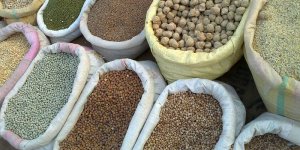| Health / Health News |
Study identifies gene that makes gentle touch feel painful after injury
In a study of four patients with a rare genetic disorder, NIH researchers found that PIEZO2, a gene previously shown to control our sense of our bodies in space and gentle touch, may also be responsible for tactile allodynia: the skin’s reaction to injury that makes normally gentle touches feel painful.

NIH funded studies found that the PIEZO2 gene may control the skin’s reaction to injuries, like sunburns, that make gentle touches feel painful. Photo: Chesler lab, NCCIH
The PIEZO2 gene encodes what scientists call a mechanosensitive protein which produces electrical nerve signals in response to changes in cell shape, such as when skin cells and neurons of the hand are pressed against a table. Since its discovery in mice, scientists have proposed that PIEZO2 plays an important role in touch and pain in humans.
In this new study, they found that PIEZO2 controls tactile allodynia after a skin injury. To test for allodynia the researchers had participants sit at a table facing a barrier that blocked their view of their arms.
The researchers then dabbed two creams onto a participant’s arm. One was a placebo, which had no effect, and the other contained capsaicin, the ingredient that makes chili peppers hot and causes inflammation, as seen with sunburns.
The researchers found stark differences between how the capsaicin affected control participants and ones with mutations in PIEZO2.
Swiping a cotton swab around the capsaicin patch consistently caused control participants to feel pain, which allowed each one to correctly identify where the inflammation was even though they could not see their arms.
In contrast, the participants with the PIEZO2 mutation felt no difference between the areas where capsaicin and placebo had been applied.
This type of PIEZO2-dependent pain makes it very hard to apply bandages to burns and wounds that are important for healing. Most pain treatments numb large areas of the body. The results suggest that if we could shut down PIEZO2 in the area of a wound, we would hopefully relieve the pain and speed recovery.
Further experiments in mice confirmed the results observed in patients. Deleting PIEZO2 eliminated gentle touch sensations in mice as well as those felt during inflammation and injury.
Although neither study shows exactly how inflammation causes pain, their results suggest that inflammation does not alter the ability of PIEZO2 to detect gentle touches. (National Institutes of Health)
YOU MAY ALSO LIKE


